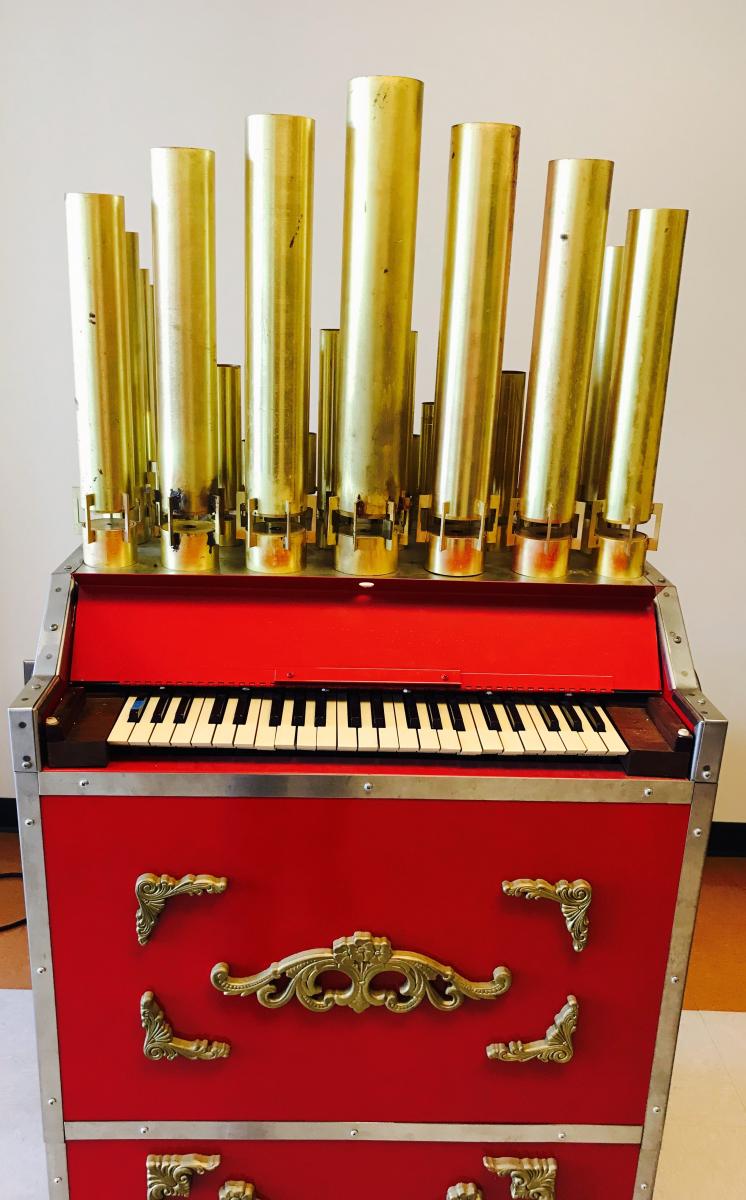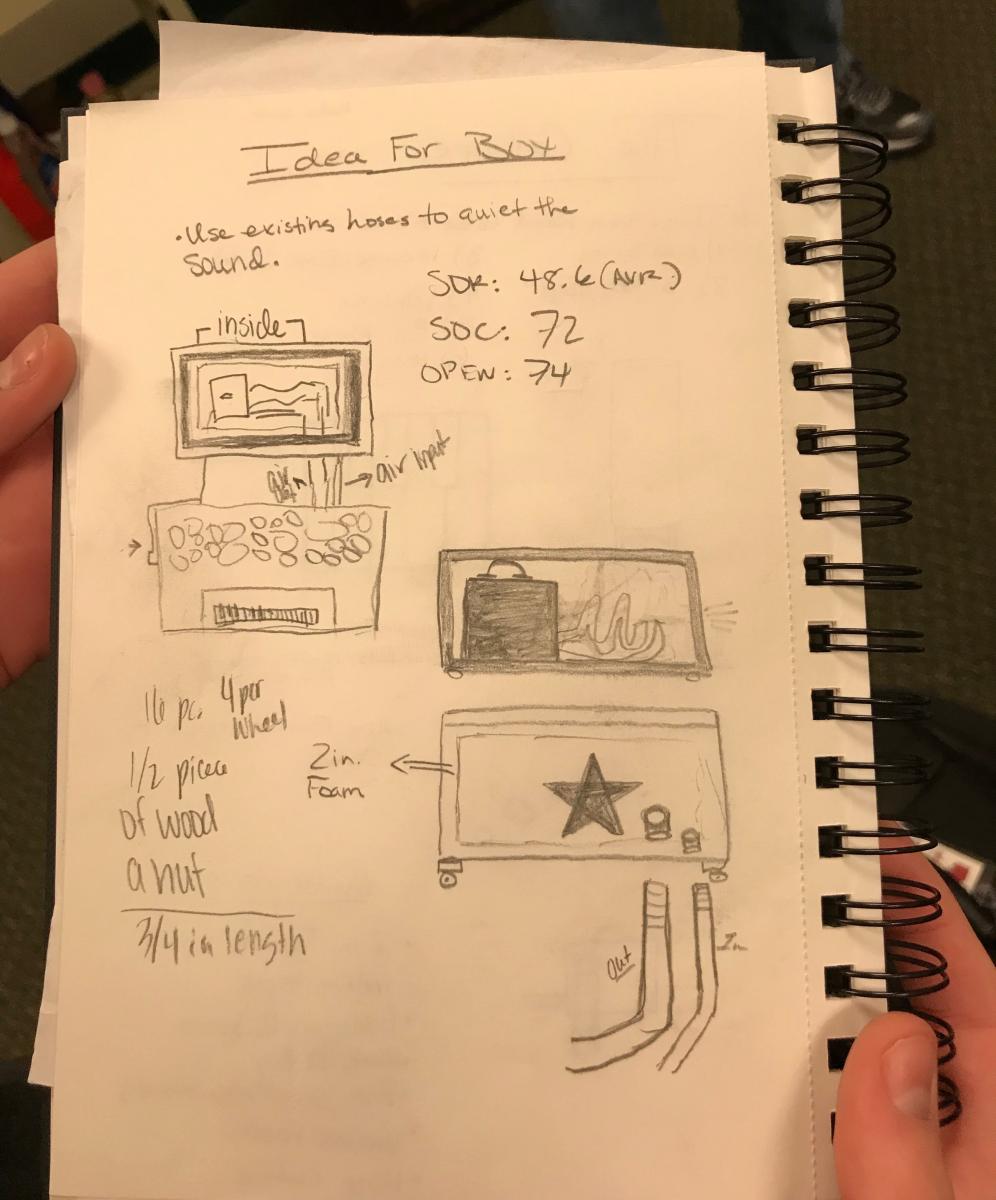Back in the 1930s, the Reynolds family kept a calliope in their hog pens near what is today the Scales Fine Arts Center on the Wake Forest University campus. The keyboard musical instrument resembles an organ with of a series of whistles sounded by steam. It was played at RJR company barbeques and other outdoor events. Decades later, a replica of a 1923 Tangley Calliaphone was given to Reynolda House. Eventually it — no longer in vogue and seldom used — also fell into disrepair.
But this broken instrument from a bygone era was recently given a second chance at life, thanks to the engineering know-how of one Summit School teacher and two eighth grade students in Winston-Salem.

In April, Summit Technology Specialist Henry Heidtmann was asked if he'd consider giving the instrument a new home. He calls the decision a no-brainer.
“I said, ‘Yes, absolutely.' I mean, what a perfect blend of arts and technology which is what we do in this building,” says Heidtmann. “So, we drove a pickup truck over there and put it on and brought it back and it did need some work. It's air issue was a problem, it needed some pipes and some redesigns, which fell into our domain perfectly.”
But Heidtmann had no intention of doing the restoration work himself. For that he turned to student volunteers, like 8th- grader Bradley Bowen.
“I'd been in his radio restore class that he would teach, and that gave me the idea to go and restore the calliope,” says Bowen. “And then, as soon as I saw it and knew what it was, based on the research provided by Reynolda, it inspired me and I got to work quickly.”
For Bowen, the first restoration challenge he faced was dealing with the loud vacuum motor. The Reynolda calliope's notes are triggered by either a performer or by paper rolls like a player piano. It requires hundreds of parts, 43 pipes, and the original construction took some 900 hours.
“I wanted to figure out a way to abate the sound, so I created a design that had foam inside and it would pretty much muffle the noise from the vacuum enough where you could hear the calliope do its thing,” he says. “Also, we replaced the input and output of the air into the calliope itself so it got a cleaner and better sound as it played.”

The three-month long project wasn't all fun and games. It was at times intense, and eventually Bowen enlisted the help of his classmate Shai Kim-Shapiro.
“There were several things where, if you made a mistake, that would be very detrimental. You only had one shot,” says Kim-Shapiro. “Like, there were several notes that were wrong and we had to refit them. And when we were putting them back together, if we made a mistake, it could potentially ruin that note. So, [there was] just the pressure of getting things right on the first try.”
Kim-Shapiro rattles of a list of skills he's picked up while restoring the old instrument—problem solving, plumbing, engineering—and he says the project enriched his learning in other ways as well.
“It was almost like traveling back in time in certain aspects. It definitely gives a certain feel or aesthetic of a previous time, and just something that we can appreciate.”
A second grade class accompanied by its teacher enters the hallway, and gathers to listen as Bowen prepares the final calliope performance of the afternoon.
“You know, even for me it was unfamiliar that that was a calliope. I mean, I had no clue,” says Bowen. “And for the children to learn how it works, and that relates to their music class, really—and how much fun they had just listening to it play, and do its thing—really made this project worthwhile.”
Bowen flips the power source on, raises the metal plate to reveal the keyboard, and suddenly the sound of a vacuum engine gives way to a peppy jazz tune from an old paper roll.
The cheery looking calliope, bright red with shiny golden pipes, seems content in its new home, with its gleaming white and jet black keys flying to the music and filling the school with sound. Students walk by it every day. There's a small display and explanation, and soon, you may hear the dulcet tones of the calliope wafting across campus. Coming up in May, it's the newly-restored calliope's outdoor debut during this year's School and Community celebration called May Frolic.
CORRECTION: An earlier version of this story included a misspelling of Shai Kim-Shapiro's name.
300x250 Ad
300x250 Ad
